National Funds to Support Greenback Recovery in CO
JANUARY 4, 2018 – The National Fish and Wildlife Foundation (NFWF) has recently announced their slate of awardees for the competitive Bring Back the Natives Grant (BBN)– a program that will provide $1 million in grants to support habitat restoration and other on-the-ground projects that advance recovery goals of native fish throughout the United States in 2018-19. A partnership between NFWF, the U.S. Forest Service, U.S. Fish and Wildlife Service, Bureau of Land Management, Bass Pro Shops and the Brunswick Public Foundation, “Bring Back the Natives represents the benefits of coordinated efforts between private landowners and federal agencies to improve the health of watersheds,” said Jeff Trandahl, executive director and CEO, NFWF.
As one of the 15 grant recipients, Colorado Parks and Wildlife (CPW) will receive $60,000 to support the design and construction of a critical temporary fish barrier on Cornelius Creek. Located in the US Forest Service Canyon Lakes Ranger District (USFS-CLRD), the George and Cornelius Creek drainage is one of the most significant Greenback Cutthroat recovery sites to date.
The Greenback cutthroat trout is currently listed as “Threatened” under the Endangered Species Act, and is believed to have been endemic to coldwater streams and lakes of the South Platte River Basin. Once a thriving species, the Greenback has suffered significant impacts from human development, competition from non-native fish, and the introduction of whirling disease. Once thought to be extinct, the native trout is making a comeback thanks to a coalition of state and federal agencies, non-profits, private landowners, and public volunteers.
The George and Cornelius Creek watershed has been identified as a high priority for establishing a robust Greenback cutthroat trout metapopulation. Due to its relatively low elevation compared to that of many other streams in the basin where cutthroat trout reintroduction may be feasible, these creeks feature thermal conditions that fall within an optimal range for cutthroat trout recruitment. Additionally, these streams are already managed for a Greenback cutthroat trout recovery population with regard to the Endangered Species Act, Section 7.
Due to the complexity of the habitat within the drainage, Colorado Parks and Wildlife and the US Forest Service will take on the project in stages. With the presence of both whirling disease (WD) and non-native fish in the area, biologists will build three temporary barriers that will segment the two tributaries and allow for effective treatment over the next few years. Once the streams have been cleared of WD and non-native competitors, the Greenbacks will be introduced. This process is expected to take several years.
The desired outcome of the entire multi-phase project is successful establishment of a self-sustaining Greenback cutthroat trout population in 14 miles of connected habitat. At this writing, Greenbacks only occur in the wild in four waters, three of which are the result of recent introductions.
The Greenback Cutthroat Trout Recovery Plan (US Fish & Wildlife Service 1998), although in the early stages of being updated, calls for—among several other requirements—stable Greenback populations in at least 31 stream miles in order for the species to be considered for de-listing. Currently, there are no stream populations in the South Platte Basin that meet the Recovery Plan’s criteria for “stable conservation populations.” Therefore, the importance of the George and Cornelius Creek Project, which is slated to create up to 14 miles of such habitat, cannot be overstated.
The Cornelius Creek barrier is essential to the overall success of the project by enabling CPW biologists to treat the upper section of the creek while concurrent restoration work is being completed in the other units. With the funding provided by the NFWF Bring Back the Natives Grant, CPW will now have the resources necessary to move forward in this critical recovery effort and secure a large drainage for the Greenback.
Note: Due to various treatment protocols for Whirling Disease (which has been found in the area), the entire project will likely be completed near 2026. The barriers will be in place by the end of 2019. For more information, please contact Dan Omasta, CTU Grassroots Coordinator (domasta@tu.org).
For more information on the NFWF BBN Grant and other recipients, Click Here.

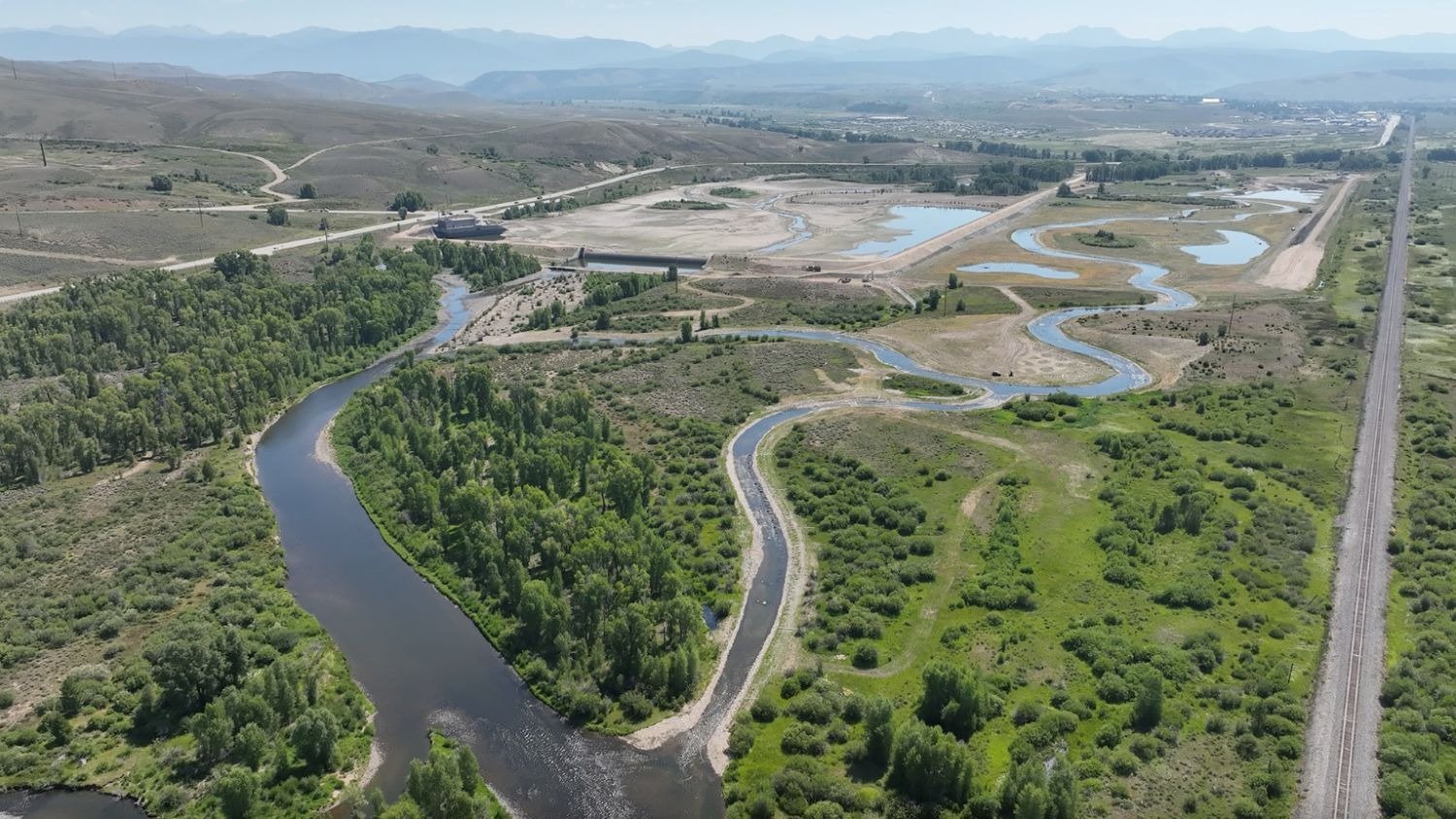












 CPW set up at the Zimmerman Lake inlet to capture spawning Greenbacks.
CPW set up at the Zimmerman Lake inlet to capture spawning Greenbacks. Fish were collected with a large net and put into a pen to be sorted and categorized by CPW staff and volunteers.
Fish were collected with a large net and put into a pen to be sorted and categorized by CPW staff and volunteers.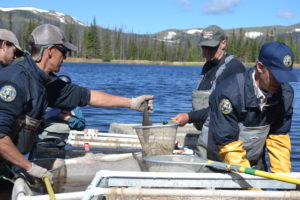 Fish were sorted based on their gender and stocking year.
Fish were sorted based on their gender and stocking year.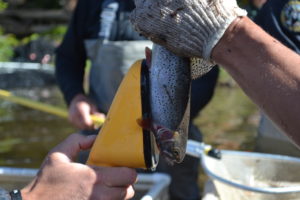 RFID chips in the fish help to identify the stocking year and other critical data.
RFID chips in the fish help to identify the stocking year and other critical data.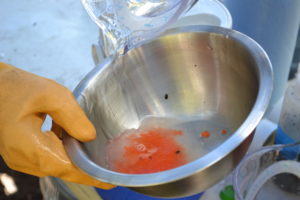 After the fish were sorted, CPW milked the males and females - making targeted genetic crosses among the various lineages to expand the genetic diversity. The eggs and sperm were combined in bowls, packed into small coolers, put on ice, and shipped to the local fish hatchery in Leadville, CO for breeding.
After the fish were sorted, CPW milked the males and females - making targeted genetic crosses among the various lineages to expand the genetic diversity. The eggs and sperm were combined in bowls, packed into small coolers, put on ice, and shipped to the local fish hatchery in Leadville, CO for breeding.
